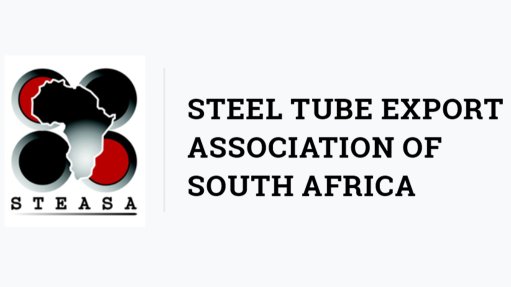Study confirms low enviro impact dairy farming equals higher profitability
Agricultural sustainability company Trace & Save has reaffirmed in a case study that a lower environmental impact is directly linked with higher profitability in the South African dairy farming industry.
The company, in partnership with Nedbank and the World Wide Fund for Nature South Africa (WWF-SA), set out to investigate the association between the economic and environmental facets of sustainability related to milk production on pasture-based dairy farms in South Africa.
Trace & Save surveyed 62 farms that together contribute 10% of the milk produced in South Africa. Fifty-five of these farms are based in the Eastern Cape and account for 30% of the milk produced in the province.
The company used the Soil, Water, Atmosphere and Nutrition system to consider soil health management, including soil fertility and structure; water management, including soil water holding capacity, effluence management and water use efficiency; atmosphere, including greenhouse-gas emissions and carbon sequestration; and nutrient management, including mineral balance and feed energy flow.
Trace & Save sustainable agriculture researcher Craig Galloway said during a Nedbank-hosted webinar on September 1 that the study sought to measure whether farming practices were becoming more sustainable over a certain period, from the start of the farming process through to the product leaving the farm.
The company considered input costs such as feed, fertiliser, diesel and electricity and how it impacted on gross margin, based on the average milk price, and looked at various productivity indicators on the farms, including stocking rate, fertiliser per hectare and rain levels per year.
The study deduced that the low environmental impact group of farmers had the highest gross margin, based on rand per litre and rand per hectare calculations.
Galloway urged farmers to reduce their use of fertiliser and rather improve soil health in other manners.
Trace & Save were advocating for improved soil health management through effective fertiliser strategies; pasture management; effluent management, which can be a beneficial tool for nutrient management if used correctly; optimal grazing management by reducing the use of fertiliser and still providing cows optimal grass; irrigation efficiency, including lower electricity use and tools towards efficiency; efficient feed conversion, as feed on dairy farms is the most expensive input cost, which also has an environmental impact; breeding efficiency and raising heifers effectively, which, if done inefficiently, decreases litres per kilogram and, in turn, impacts on the sustainability of farming systems.
Galloway highlighted that sustainable dairy farming was about how well best practices were implemented, managed and monitored for impact, rather than about boxing-ticking exercises.
“Sustainability is not a point to be reached, but involves becoming increasingly sustainable over time.”
WWF-SA water stewardship project manager Sue Viljoen said regenerative farming requires a scientific and financial motivation, emphasising that environmental stewardship is not a nice to have but rather an essential to have, when one wants to future-proof a business.
She added that the Trace & Save approach to farming sustainability practices was particularly welcome, given that South Africa lacks absolute measurement of sustainability performance and certification standards.
Moreover, Viljoen mentioned that there were barriers other than the lack of standards to achieving sustainability best practice, including misconceptions about what sustainability entails.
She explained that farmers need to be willing to go against convention and work through the multiple contradictory voices, which are borne from a lack of readily available information.
To illustrate the urgency of adopting these practices, Viljoen asked the rhetorical question of whether farmers can withstand another drought, or multiple droughts for years to come.
She pointed out that the entire dairy value chain stood to gain from supporting sustainable farming practices in that it reduces risk down the line, including fewer litres of production or millions of litres needing to be dumped as a result of unrest and its impact on supply chains – Viljoen alluded to the impact on the dairy sector of the civil unrest experienced in July.
She believes banks, breeders, milk processors, feed companies, retailers and even veterinary product suppliers all need to carry the cost of mitigating risk.
Viljoen said that if every dairy farmer in the country increased their soil carbon by just 0.2% in the top three centimetres of soil, the industry would see 15-million tonnes of carbon dioxide-equivalent being stored in the soil over five years, which is equal to 6.3 years’ worth of emissions and it would effectively make dairy farming carbon neutral.
She pointed to other incentives the industry currently offers, such as the South Africa AgriCarbon Programme recently launched by Carbon Neutral Group. If farmers sign up before the end of September, they can sell carbon credits at a rate of R115/t of carbon sequestered and get paid for storing carbon in soil.
Viljoen concluded that changes to farming practices need not be done all at once, but could be implemented over time.
“The biggest challenge around sustainability does not relate to financial input, but rather the change in mindset and a commitment to the journey, one step at a time.”
Article Enquiry
Email Article
Save Article
Feedback
To advertise email advertising@creamermedia.co.za or click here
Comments
Announcements
What's On
Subscribe to improve your user experience...
Option 1 (equivalent of R125 a month):
Receive a weekly copy of Creamer Media's Engineering News & Mining Weekly magazine
(print copy for those in South Africa and e-magazine for those outside of South Africa)
Receive daily email newsletters
Access to full search results
Access archive of magazine back copies
Access to Projects in Progress
Access to ONE Research Report of your choice in PDF format
Option 2 (equivalent of R375 a month):
All benefits from Option 1
PLUS
Access to Creamer Media's Research Channel Africa for ALL Research Reports, in PDF format, on various industrial and mining sectors
including Electricity; Water; Energy Transition; Hydrogen; Roads, Rail and Ports; Coal; Gold; Platinum; Battery Metals; etc.
Already a subscriber?
Forgotten your password?
Receive weekly copy of Creamer Media's Engineering News & Mining Weekly magazine (print copy for those in South Africa and e-magazine for those outside of South Africa)
➕
Recieve daily email newsletters
➕
Access to full search results
➕
Access archive of magazine back copies
➕
Access to Projects in Progress
➕
Access to ONE Research Report of your choice in PDF format
RESEARCH CHANNEL AFRICA
R4500 (equivalent of R375 a month)
SUBSCRIBEAll benefits from Option 1
➕
Access to Creamer Media's Research Channel Africa for ALL Research Reports on various industrial and mining sectors, in PDF format, including on:
Electricity
➕
Water
➕
Energy Transition
➕
Hydrogen
➕
Roads, Rail and Ports
➕
Coal
➕
Gold
➕
Platinum
➕
Battery Metals
➕
etc.
Receive all benefits from Option 1 or Option 2 delivered to numerous people at your company
➕
Multiple User names and Passwords for simultaneous log-ins
➕
Intranet integration access to all in your organisation
















